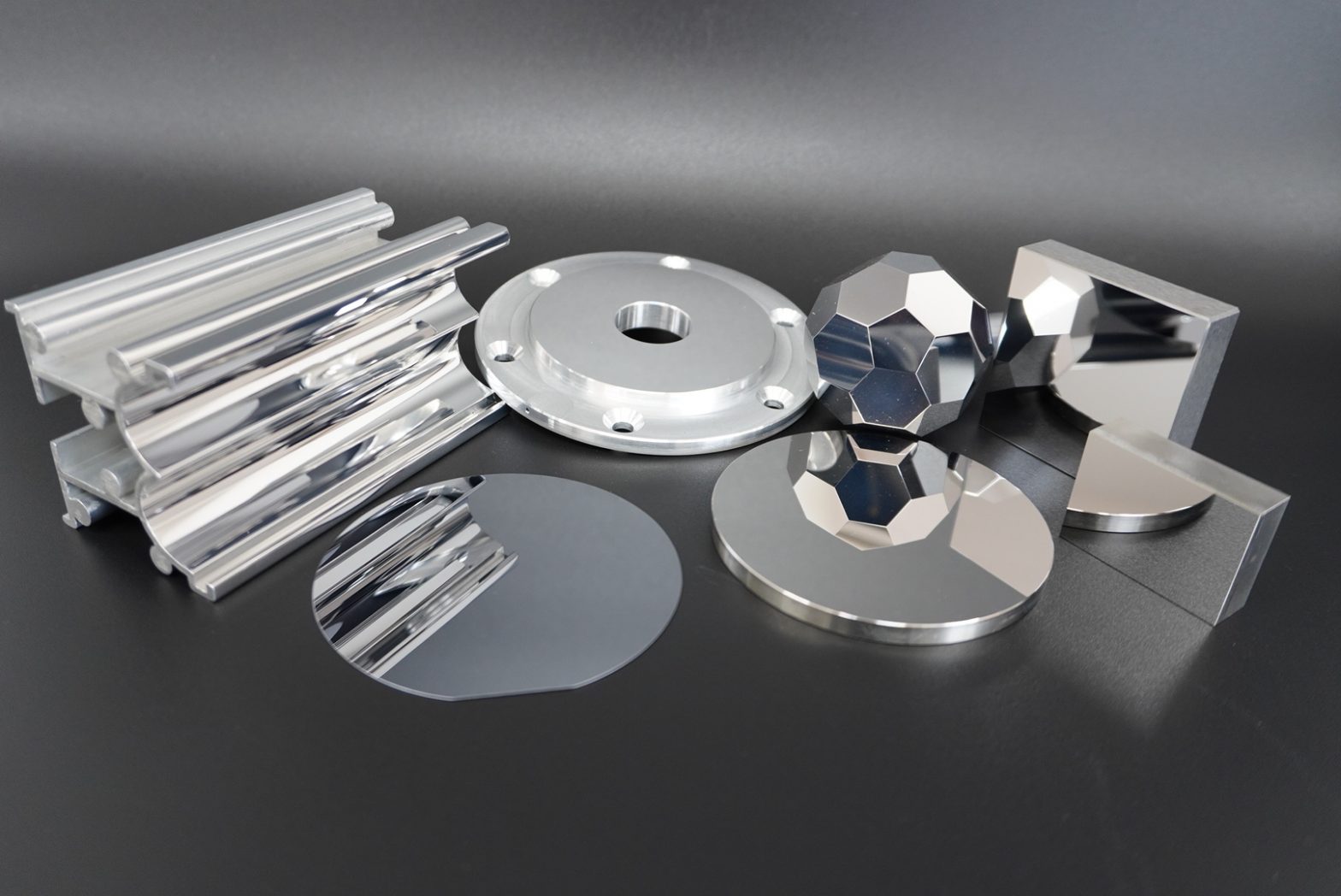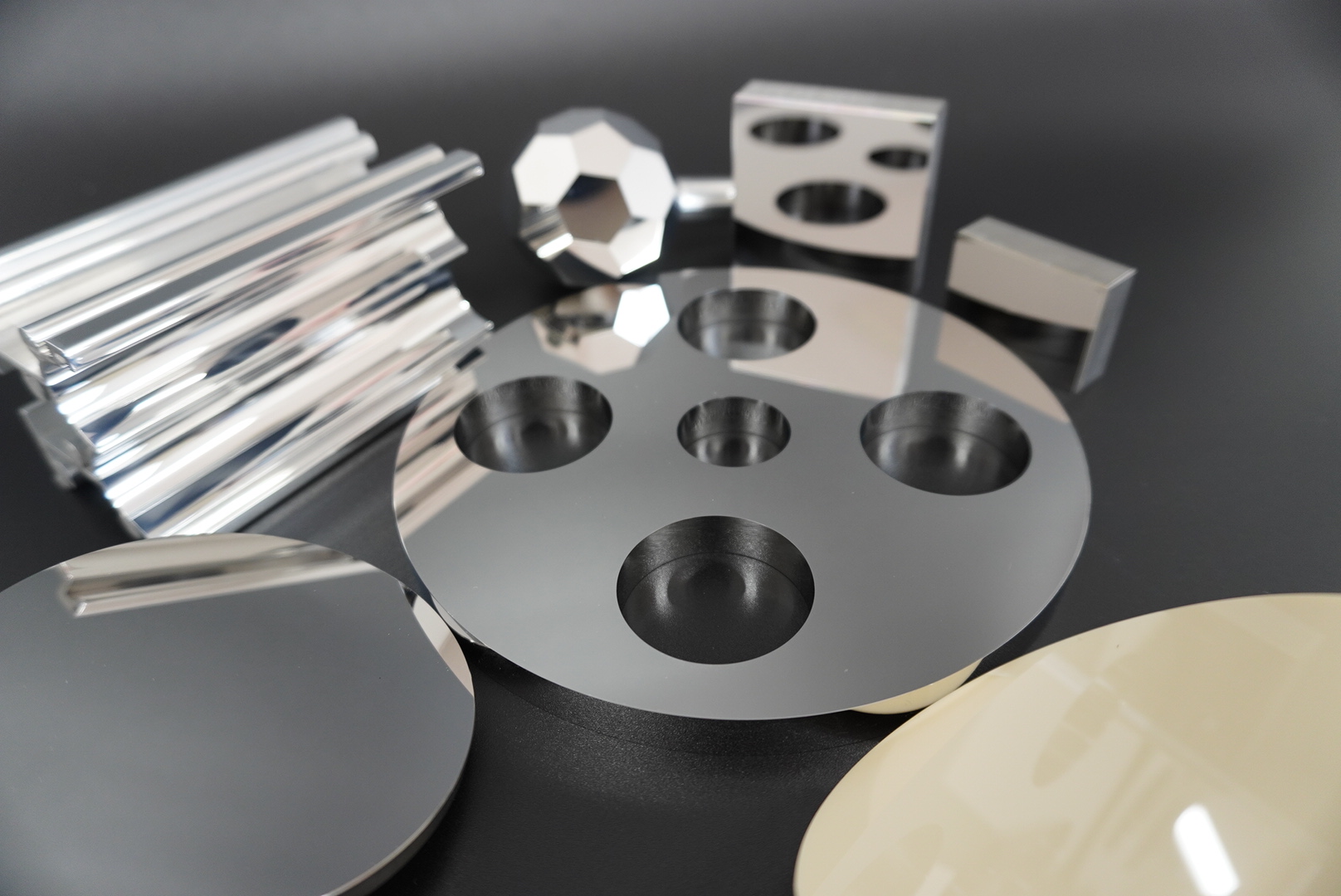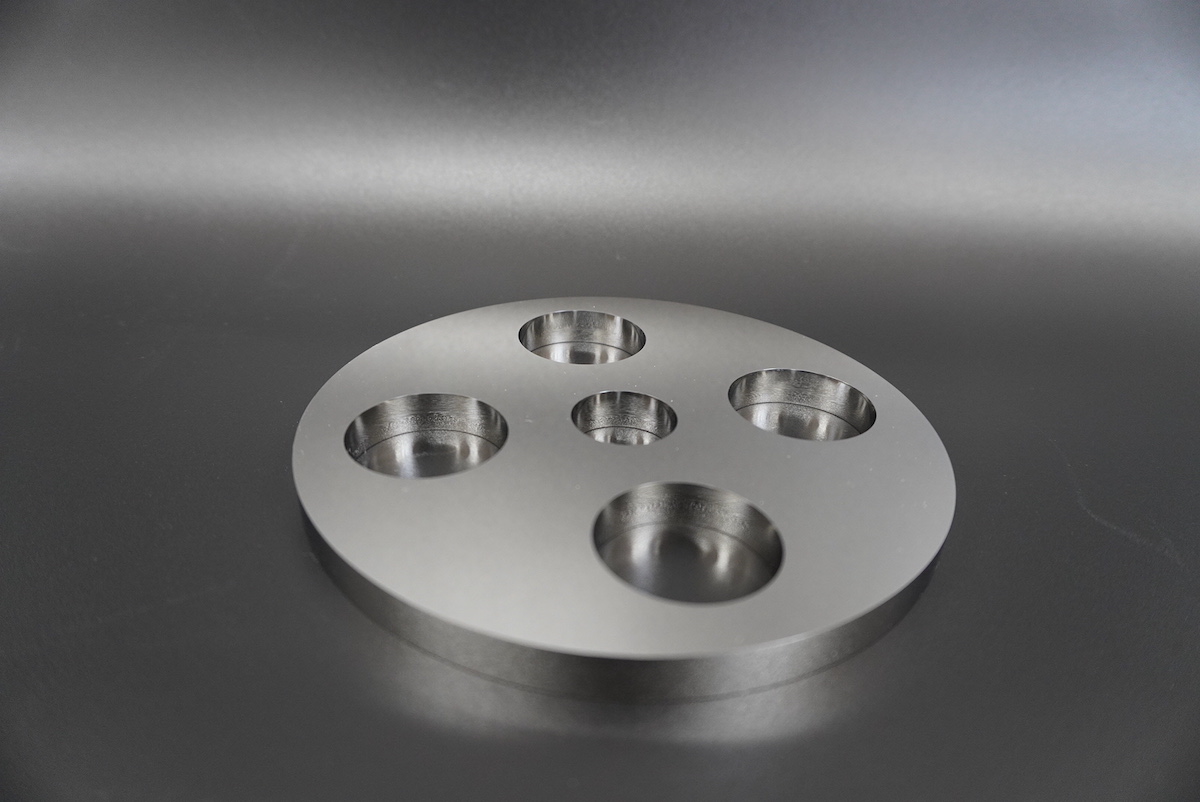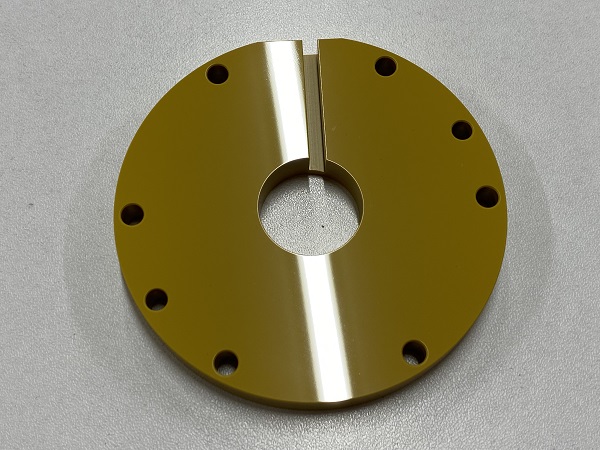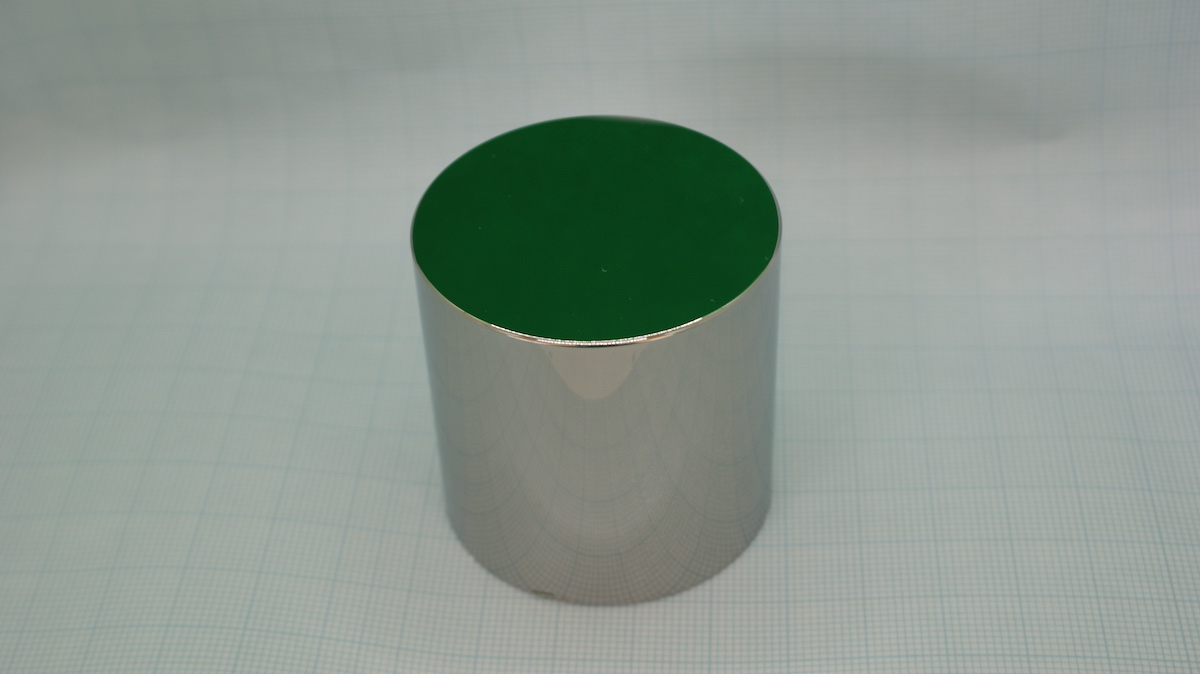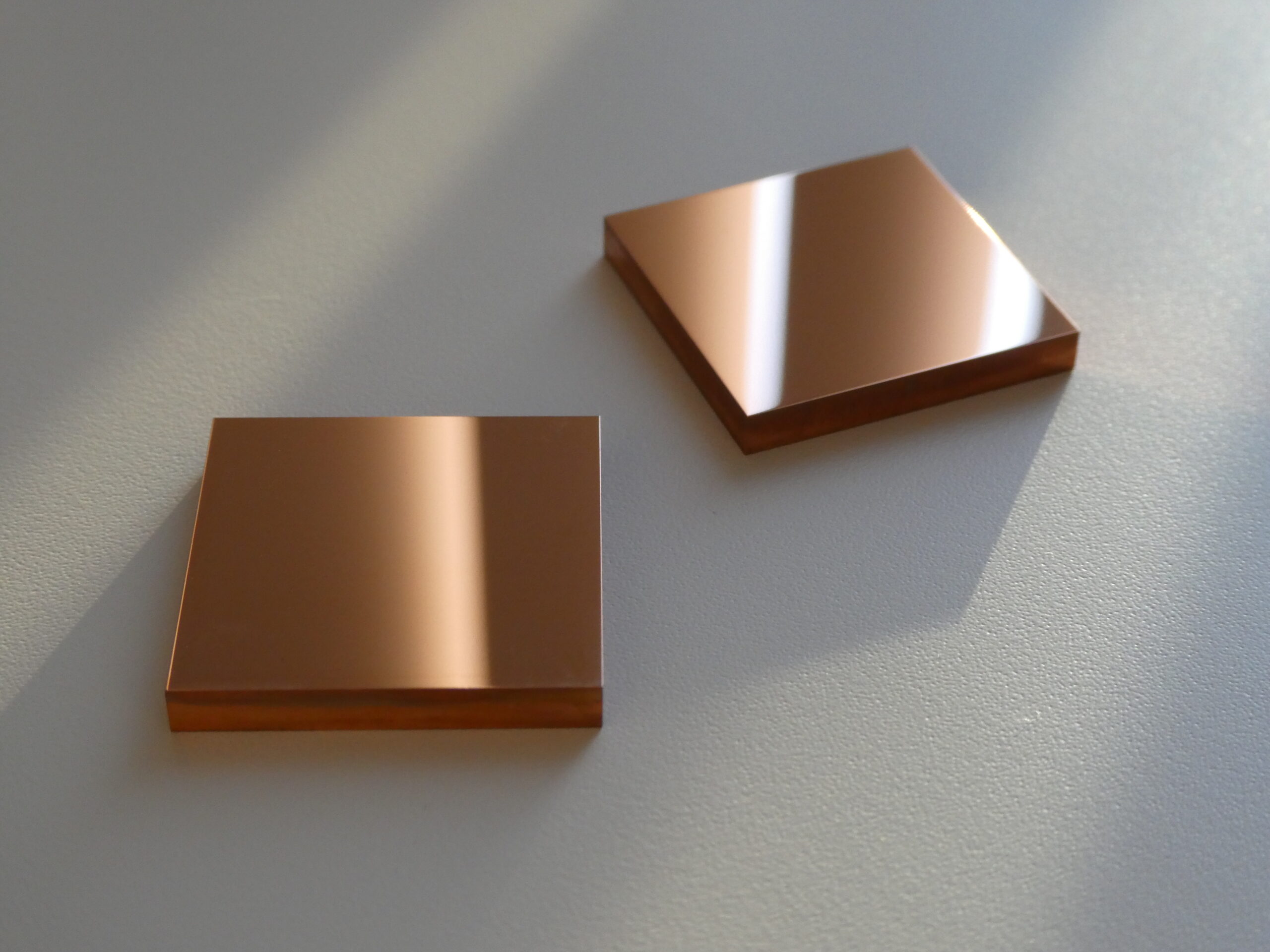
Copper polishing
In this article, I will introduce the polishing process of copper by TDC.
Polishing is the process of removing unevenness on the product surface by contacting the workpiece with fine hard particles called “abrasive grains” or immersing it in chemicals. In polishing, we can handle surface treatment in microns, depending on the workpiece material and processing method.
If you want to know the basic knowledge of polishing and how it differs from grinding, please check the “Polishing service” article.
Contents
Properties and uses of copper
Copper has various properties, so it is used in a wide range of applications, from precision equipment to daily necessities.
Copper is often made into copper alloys such as “brass” with zinc added, “cupronickel” with nickel added, and “bronze” with tin added to give it new properties.
Here, we will introduce the basic properties of copper.
- High electrical and thermal conductivity
Copper conducts electricity easily among metals and is easily affected by heat. Due to these characteristics, it is widely used in electronic device parts.
- Non-magneti
Copper is a non-magnetic metal, so it is used in electronic devices and measuring instruments that need to avoid the effects of magnetism.
- Excellent workability and corrosion resistance
Copper is a metal with excellent malleability, ductility, and machinability, and is used in products such as copper wires, copper plates, and copper pipes.
It is also characterized by its excellent corrosion resistance, and is also used in building materials such as vehicle and ship parts and roof shingles.
However, since it is a material that is easily scratched, high technology is required when performing precision processing.
- Shiny
Copper is often used in products that require a beautiful appearance because it can produce a brilliant luster in the finish.
- Antibacterial properties
Copper exerts the effect of reducing the growth of bacteria by reacting copper ions with moisture. Therefore, it is also used for drainage baskets around the kitchen and triangular corners.
Types and methods of copper polishing
Lapping, buffing, chemical polishing, electrolytic polishing, and CMP polishing are mainly used for copper polishing. At TDC, we use polishing techniques such as lapping and CMP polishing to meet your copper polishing needs.
- Lapping polishing
Lapping polishing is a mechanism in which a workpiece is set on a disk-shaped table called a lapping machine, an abrasive is poured in, and pressure is applied from above and below to polish it. High-precision polishing is possible by selecting abrasive grains and processing conditions.
For those who want to know the basic knowledge of lapping, please refer to the page of “About Lapping and Polishing” page.
- Buffing
Buffing is a method in which a disk-shaped buff made of cotton or felt is coated with an abrasive, and then the buff is rotated at high speed and applied to the work to polish it. The processing cost is low, but the accuracy is poor compared to lapping, so it is used when accuracy is not so important.
Buff polishing leaves fine scratches on the surface to give it a glossy finish, so for products that require precision, lapping or CMP polishing is recommended.
- Chemical polishing
Chemical polishing is a technique in which the workpiece is immersed in a processing solution, causing a chemical reaction that dissolves and polishes the metal surface. The surface of the material is smoothed because the convex parts of the metal are preferentially melted.
Chemical polishing is used for polishing areas that cannot be processed by physical polishing, and is also effective in removing fine burrs.
On the other hand, if the workpiece has large unevenness, it is difficult to smooth it out.
- Electropolishing
Electropolishing is a method of polishing by dissolving a workpiece immersed in an electrolytic solution with the power of electricity. Since the workpiece is immersed and polished, even parts that cannot be processed physically can be polished.
However, it tends to be difficult to polish scratches and large irregularities.
- CMP polishing
CMP polishing is a technique that simultaneously performs chemical polishing and physical polishing using abrasive grains. Since surface roughness can be adjusted at the atomic level, it is a processing method that enables higher-precision polishing than other types of polishing.
Details of CMP polishing are explained in detail on the “What is CMP” page.
Features of TDC’s precision processing of Copper
TDC’s precision processing of copper has the following strengths and characteristics.
- High-precision polishing technology
By controlling the removal amount with TDC’s precision polishing technology, we have achieved ultra-precision precision processing at the micron level and nano level even in the processing of crystal materials and glass.Compared to processing methods such as cutting and grinding, it is possible to handle any shape without applying a load to the object. - Short delivery time and express service available
By owning more than 100 polishing machines, we can achieve short delivery times even for large lots and complex processing. If you are in a hurry, we will also respond to consultation with “express response”. - Small lot items
Please feel free to contact us for small lot orders starting from 1 unit and prototype production. - Owns over 100 abundant processing machines
TDC owns more than 100 polishing machines such as lapping machines and surface grinders. We also have various processing machines such as machining centers and milling machines, so we can handle all kinds of processing. - Half of the polishing equipment is manufactured in-house
About half of the more than 100 polishing machines are made in-house, realizing “low-cost” and “high-quality” manufacturing.
TDC owns processing machines such as single-side mirror surface lapping machines, double-side lapping machines, and CMP lapping machines, and can handle polishing processing according to your desired quality and cost.
In addition, we have processing machines such as machining centers and milling machines, so we can handle other than polishing processing.
TDC copper polishing process example
Here are three examples of typical copper polishing at TDC.
Copper polishing example 1: “Copper material test piece/specimen”
- Size: Any size you want
- Processing details: We will manufacture a specular test piece in the desired size. We can handle any material, from pure copper to alloys.
- Accuracy: Ra ≤ 1 nm (Rough surfaces can also be manufactured)
Copper polishing process example 2: “Copper long foil mirror finish”
- Size: 220 x t0.018 x 10M (any size is available)
- Processing details: A thin, long piece of foil is mirror-finished. Although it depends on the material, it is finished with a surface roughness of Ra5nm or less.
- Accuracy: Ra≤5nm
Copper polishing example 3:
- Material: Copper plate Polished for flatness
- Size: 400x500x10
- Processing details: Both sides are polished to a flatness of ≤ 0.001, and one side is mirror-finished. In terms of flatness, we can manufacture not only a flat surface, but also a desired uneven shape.
- Accuracy: flatness ≤ 0.001, surface roughness Ra ≤ 1nm
Contact TDC for precision polishing of copper
Although copper is a metal with many advantages, its hardness is not very high, so high-precision polishing requires advanced technology.
At TDC, we have various processing machines such as single-sided mirror lapping machines, double-sided lapping machines, and CMP lapping machines, so we can handle polishing according to product specifications and costs.
We are particularly good at high-precision polishing, so if processing without distortion or scratches is required, please feel free to contact us.
Related page


